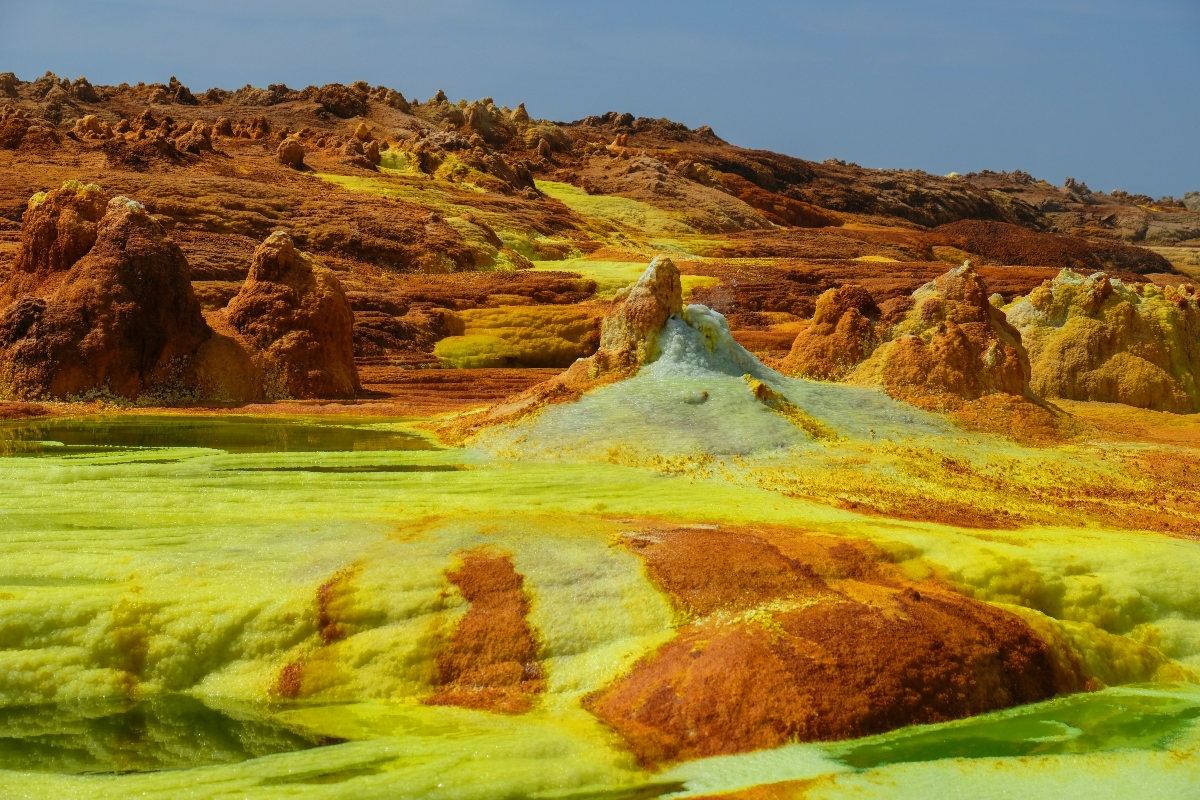If you’re sick of fighting your way through hordes of tourists at must-visit destinations and are instead craving an off-the-beaten-path experience, look no further. We have searched high and low and found six secret treasures that are certain to amaze and lure you. These lesser-known destinations offer everything from natural beauty to storied culture and unforgettable experiences.
Svaneti, Georgia
Located high in the Caucasus Mountains, the region of Svaneti is a hidden jewel in Georgia. This remote area is home to the Svan people. The Svan are known for their fierce independence and largely unchanged culture. Svaneti’s landscape is nothing short of breathtaking. Snow-capped peaks tower over green valleys with ancient stone towers that have become the region’s signature. These defensive structures, built between the 9th and 13th centuries, offer a fascinating glimpse into Svaneti’s turbulent past.
The village of Ushguli, a UNESCO World Heritage site, is a must-visit. Standing at an elevation of 2,100 meters (6,900 feet), it’s one of Europe’s highest continuously inhabited settlements. Walking through its narrow streets feels like stepping back in time, with traditional Svan houses and towers standing as they have for hundreds of years.
Dallol, Ethiopia
For those seeking a truly alien destination, look no further than Dallol in Ethiopia’s Danakil Depression. This geothermal wonderland holds the record for the hottest place on Earth, with average annual temperatures of 35°C (95°F). But it’s not the heat that makes Dallol extraordinary – it’s the colors. The area’s distinct geology has created a surreal palette of yellows, oranges, and greens that seem almost too vivid to be real. Hot springs, mineral formations, and salt plains combine to form a landscape that looks more like another planet than anywhere on Earth.
Visiting Dallol is not for the faint of heart. The extreme heat and harsh conditions require careful planning and a good guide. But for those who make the journey, the rewards are immeasurable. Walking across the salt flats, marveling at the otherworldly mineral formations, and watching the sun rise over this psychedelic landscape are experiences to last a lifetime.
Faroe Islands
Halfway between Scotland and Iceland lie the Faroe Islands. This archipelago of 18 rugged islands remains one of Europe’s best-kept secret destinations. With cliffs, waterfalls, and colorful villages, the Faroes boast natural beauty and Nordic charm. The island’s remote location has helped preserve its culture and unspoiled land. Visitors can explore valleys full of grazing sheep, hike along clifftops with ocean views, or take a boat trip to see the towering sea stacks up close.
One of the Faroes’ most iconic sights is the Múlafossur waterfall in Gásadalur. This stunning cascade plunges directly into the ocean, framed by green cliffs and traditional grass-roofed houses—a scene that epitomizes the islands’ raw beauty. Wildlife enthusiasts will be in heaven, with opportunities to spot puffins, guillemots, and other seabirds nesting on the cliffs.
Zhangjiajie, China
Deep in China’s Hunan Province lies an extraordinary landscape that inspired the floating mountains of James Cameron’s “Avatar.” Zhangjiajie National Forest Park is home to thousands of sandstone pillars that rise from the mist-shrouded valleys below. The park’s most famous attraction is the Hallelujah Mountain, renamed after the movie due to its striking resemblance to the film’s floating peaks. But Zhangjiajie’s wonders don’t stop there.
The Zhangjiajie Grand Canyon Glass Bridge, the world’s highest and longest glass-bottomed bridge, offers heart-stopping views of the canyon below. For those who prefer to keep their feet on solid ground, the park offers numerous hiking trails that wind through lush forests and provide vistas of the sandstone formations. Cable cars and elevators also provide easier access to some of the park’s most spectacular viewpoints.
Lençóis Maranhenses National Park, Brazil
Hidden away in northeastern Brazil is the Lençóis Maranhenses National Park. This stunning natural wonder is an ecosystem where a vast expanse of towering dunes is punctuated by crystal-clear freshwater lagoons, creating a patchwork of blue and white. The park’s name, which translates to “bedsheets of Maranhão,” perfectly describes the rolling, rippling dunes that stretch as far as the eye can see.
During the rainy season (typically January to June), the spaces between the dunes fill with rainwater, creating thousands of temporary turquoise and emerald lagoons. Visitors can trek across the dunes, swim in the refreshing lagoons, and witness one of nature’s most extraordinary spectacles. The best time to visit is between July and September when the lagoons are full and the rain has subsided.
Yakushima, Japan
Off the southern coast of Kyushu, Japan is the small circular island of Yakushima. Here, ancient forests, mist-shrouded mountains, and cascading waterfalls create a scene straight out of a Studio Ghibli film. Yakushima’s moss-covered forests of thousand-year-old cedar trees (known as yakusugi) inspired the magical forest setting in the animated masterpiece “Princess Mononoke.” The most famous of these trees is Jōmon Sugi, estimated to be between 2,000 and 7,000 years old.
Hiking is the primary activity in Yakushima, with trails ranging from easy walks to challenging multi-day treks. As you explore this destination, you’ll encounter bubbling streams, hidden hot springs, and an incredible diversity of plant and animal life, including the island’s famous macaque monkeys and loggerhead turtles. The island’s climate is unique. Some areas receive rainfall almost daily, creating a lush, green environment that feels primordial. This constant moisture nourishes the island’s exceptional biodiversity, earning it UNESCO World Heritage status.





